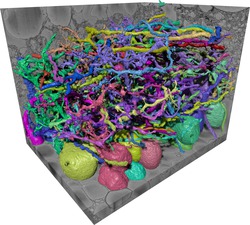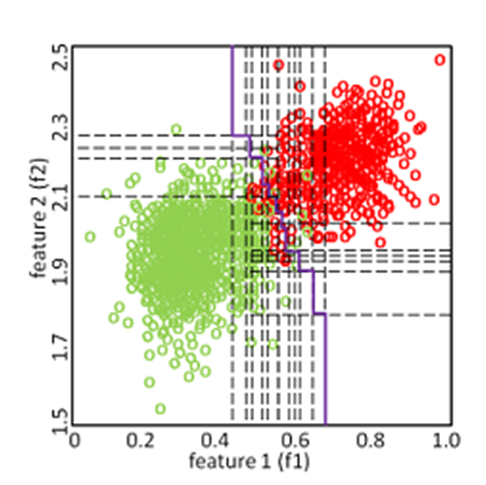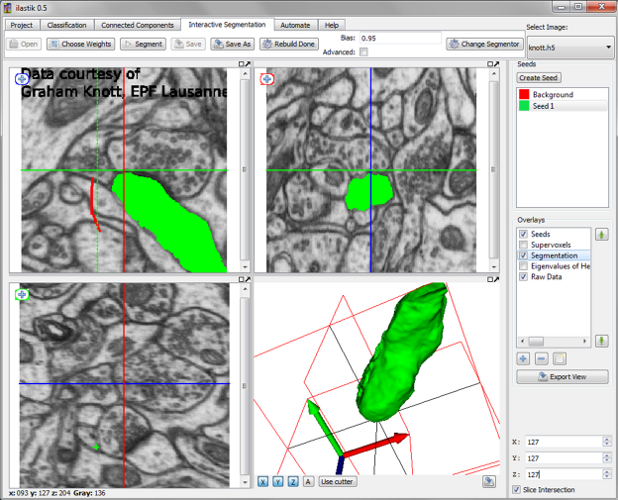If you are interested, send an email to Fred Hamprecht. Our topics are particularly
suitable for students of physics, mathematics, and computer science, but motivated people
from other fields are also welcome!

Neuro SegmentationA major goal of neuro-science is the understanding of basic neural circuits. To this end, novel electron microscopic methods acquire 3-dimensional images of the brain at a resolution of 10-20 nm and a field of view of up to 0.1 mm. These huge datasets can only be analyzed automatically, and our group is a major algorithm provider for this application. We continuously offer interesting master projects dealing with specific subproblems, for example:
|
The Digital EmbryoBiologist are making rapid progress towards the understanding of embryonic development. Thanks to novel light-sheet microscopes that can capture fully 3-dimensional volume data at a temporal resolution of under one minute over several days, they can now study how initially independent cells manage to group themselves into all the different organs of an organism. Our group addresses the algorithmic challenge to track all visible cells in such a dataset over time. We continuously offer interesting master projects dealing with specific subproblems, for example:
|

Development of Novel Machine Learning MethodsMachine learning has become the method of choice to solve complex image analysis problems. It allows non-expert users to train a generic analysis algorithm by showing examples of desired outcomes. To extend the scope of this approach to more complex problems, we investigate new learning methods and novel ways to train them. Interesting master projects in this context include:
|

Scientific Software DesignOur image analysis solutions apply complex algorithms to huge amounts of data and yet must be intuitively operable by non-experts. This poses great challenges on careful software design, and our group maintains a number of major open-source projects to address these challenges. Fast and flexible modules for fundamental image analysis and optimization algorithms are mainly implemented in the VIGRA and OpenGM C++ libraries, whereas the Python-based ilastik project takes care of the high-level organization, parallelization, and graphical user interface. Students who want to master advanced software development techniques can contribute to these projects in many ways, for example:
|


